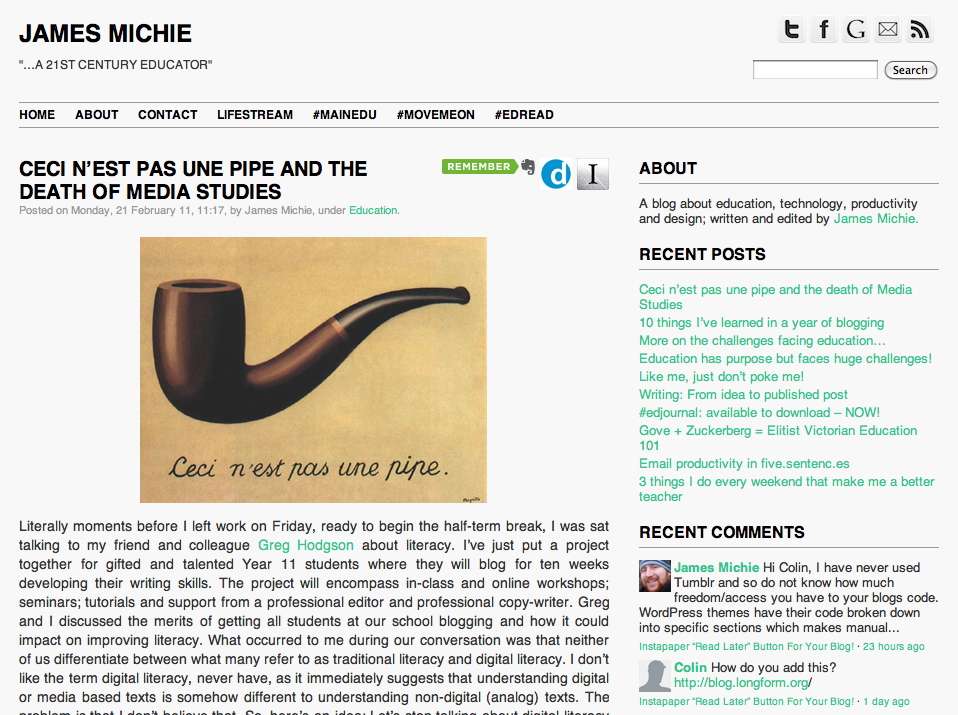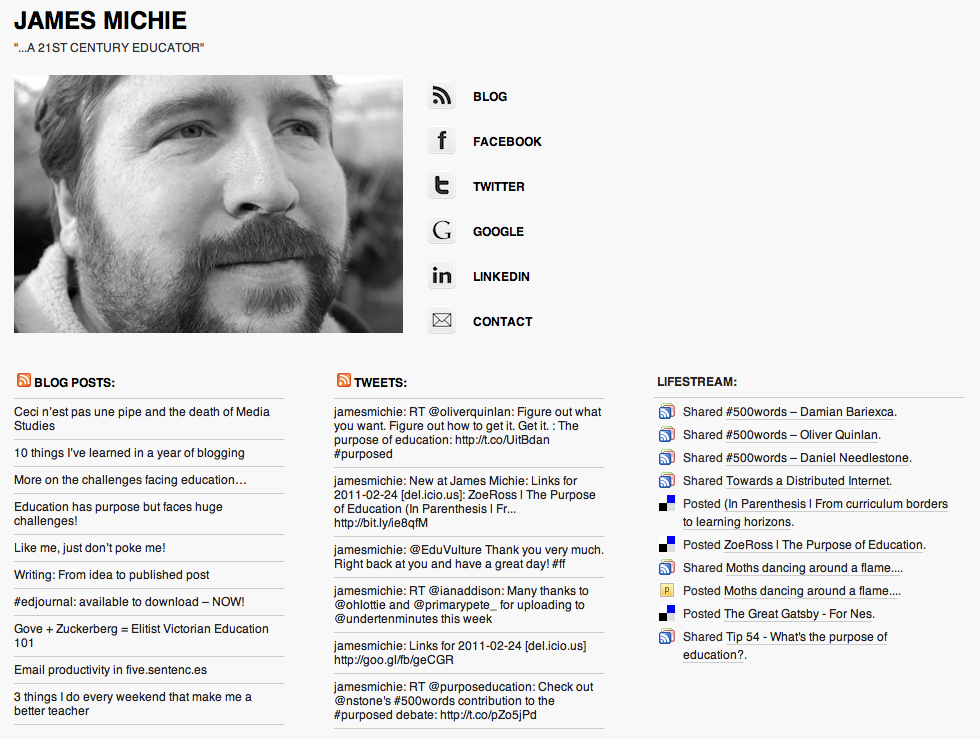One way that I have sought to enrich the experience of my students is to give them opportunities to learn from others rather than just myself. To them I am the expert but in many facets of what I teach, particularly the practical elements, I am only a few steps further on than they are; and in fact many of them, by the time they reach A2 Level, surpass me in technical skill. It is for this reason that each year I invite one or two ex-students back to school, involving them with my classes throughout the days that they are in.
Why do this? What are the benefits?
1. The students enjoy learning from someone else who is not the ‘teacher’, who to them is only a few years on from where they are now. This relationship sits somewhere between peer and role model and I find that the attentiveness of the students when working with the ex-student is very high.
2. The ex-student is becoming an expert in their chosen field. Take Sophie, who I will be telling you more about a little later in this post. She has just completed her final year of animation at UWE in Bristol. She knows far more than I do about the nuts and bolts of developing an animation from conception to realisation.
3. The process can also be a highly enriching one, where both the current students and ex-students learn from it. Sophie has said to me recently that coming back into school in this role helped her to develop her confidence and add clarity to what she was learning and why.
Sophie is an ex-Media and Art student who decided to pursue a career in Animation. Upon receiving her results she was accepted on to the animation course at the University of West England in Bristol. Always an enthusiastic student and never one to shy away from work she emailed me early into her first year telling me how much she was enjoying the course. Towards the end of the email she asked if I minded that she visited the school during her spring break and could she be of any help. I wasn’t sure what I would her get her to do exactly but new that there would definitely be a benefit in having another enthusiastic individual around the department. I replied with an enthusiastic yes. Since then Sophie has returned at least once each year for the past three.
While she is here she involves herself in a number of ways supporting students in both the Media and Art department. She has stood in front of my tutor group talking enthusiastically about university life. She has done a similar job in front of my Y13 Media class discussing her work and the rigours/enjoyment of university level study. She also joins the GCSE classes and supports the students by lending a critical eye to their coursework. On her most recent visit she sat down 1-2-1 with a number of my Creative Media Diploma students offering them advice about the development of animations they were creating for an festival they ran in March. My students found her presence in the class to be very valuable and they recorded her feedback as part of their development.
The students’ response to Sophie is always excellent, in part this is down to her personality but also I believe that she inhabits a space between teacher and student – she is both expert but someone who is not too far from their own age. The level of engagement on the part of the students seems to be tweaked up a notch. Similar to what happens on project days where we invite creative practitioners into school. They are not ‘teacher’ and therefore the relationship is different.
During her most recent visit she also helped to develop my students understanding of how an animation project evolves. She was in the pre-production stages of her final project and she used her blog to illustrate the different activities she was working through. This included:
- making life studies to create realistic characters
- testing things and creating short practice animations
- developing ideas through drawing, storyboarding and discussion
She also shared her thoughts and feelings about:
- inspiration and where it comes from
- the difficulty of working in groups
- why she is specialising in ‘pre-production’ and illustration
- and what she is working on for her final project
The students found her insights fascinating, as did I. The process was all the more enriching due to the fact that she has continued to blog all of her work, a process she adopted as an A-Level Media student.
Not only has Sophie been a valuable resource inside the classroom. This past year she was a guest blogger on the Media Studies department blog, sharing ideas and useful resources. This worked really well, providing a further source of information for my students to draw from.
What’s more it has led me to consider other ‘online’ ways that I could get ex-students involved in supporting my students, such as a Facebook group or connecting them via Twitter, so that they can seek advice and guidance from a wider pool. I’m certainly giving this serious thought in preparation for next year.
I firmly believe that asking ex-students to come back and contribute to the learning of my current students has been invaluable. I would recommend, that if you are not doing this with your students, you should seriously consider it. The problem I face next year is who do I choose to replace Sophie as she steps out into her future career.
If you want to know more about Sophie and her work, use the following links:





